Science videos
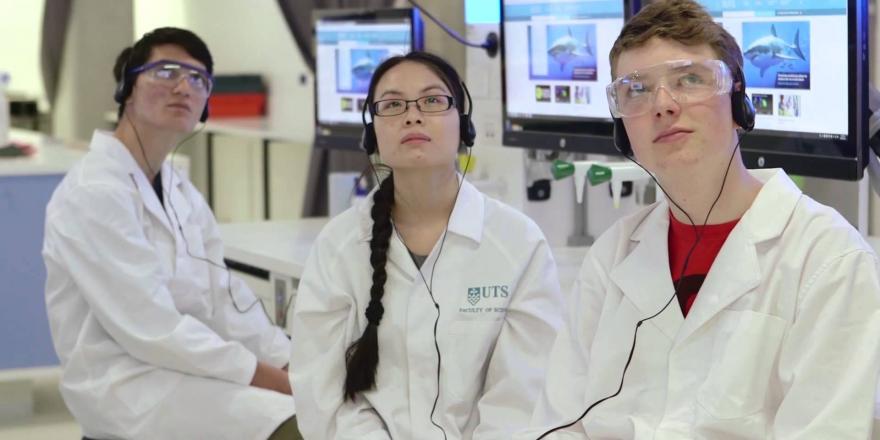
The UTS: Science Super Lab is the first of its kind in Australia. Featuring modern equipment and technology it can accommodate up to 220 students from 12 different classes, with experiments from different disciplines running at once. This short video provides a detailed look into a day in the life of the Super Lab.
[Instrumental music]
A unique facility
[Opening shot panning across students using computers at work benches]
52 metres long
26 workbenches
12 demonstrator stations
[Close up shot of Super Lab computers panning out to view entire lab]
Break out sections
Lots of natural light
[Shot of four tables in a break out section with students sitting at tables watching smart board, a demonstrator in a blue lab coat talks students through content on smart board]
[High shot overlooking Super Lab full of students all wearing white lab coasts working at benches with computers]
12 different classes
220 students
Learning simultaneously
[close up of three students in white lab coats with headphones on looking at computers and writing]
[Demonstrator wearing blue lab coat puts headphones on]
Two-way wireless headset and microphone communication]
[close up of student plugging headset cord into receiver; and then putting headphone set on head]
Sophisticated and easy to use
[Demonstrator wearing blue lab coat touches computer monitor; students at work benches follow on their own computers]
Video streaming to students’ PCs
[close up of student wearing headphones looking at computer]
12 LCD screens
[Diagrams are projected on to large LCD screen as students watch]
Document and PC Projection
[Demonstrator in blue lab coast talks and students look at LCD screen]
[Physics student in white lab coat and clear safety glasses opens drawer at workstation pulls out keyboard talks to two other students while looking at PC]
Surface Pro tablet and wireless camera
[Student touches computer monitor to enlarge graph]
[Students look at computer and notebook discussing problem]
[a button is pressed which changes a blue light at their workstation to orange]
Orange lights alert demonstrators to students
[Light turns orange and a demonstrator in a blue lab coat and clear safety glasses comes to students to assist]
Students are well supported
[Demonstrator continues to talk to group of students who nod their heads]
[Close up of students in white lab coats picking up test tube with red chemical out of fume cupboard]
[Demonstrator in blue lab coat points to test tube and talks to student in white lab coat]
The UTS: Science Super Lab is the first of its kind in Australia. Featuring modern equipment and technology it can accommodate up to 220 students from 12 different classes, with experiments from different disciplines running at once. This short video provides a detailed look into a day in the life of the Super Lab.
Featured videos
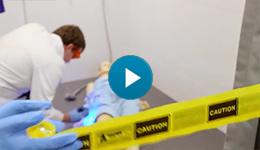
Inside the Crime Scene Simulation Lab
Forensic students at UTS Science have access to a unique Crime Scene Simulation Lab. Set up like a city apartment, the lab provides students with practical experience in crime scene investigations.
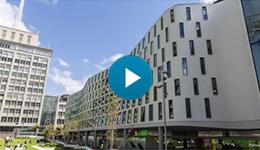
Inside UTS’s new Faculty of Science and Graduate School of Health Building
Take a tour of the building's stunning interiors and hear about its impact on the future of learning and research in this video.
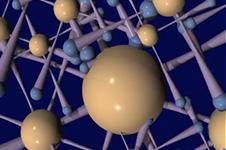
Designer molecule
Dr Andrew McDonagh’s research focuses on using molecules to construct structures on surfaces that can be probe with the goal to isolate the molecule for its electronic properties.
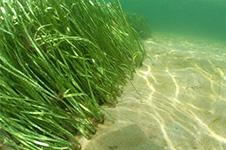
Seagrass: greenhouse gas fighter
Dr Peter Macreadie's research focuses on seagrass, one of the most powerful natural systems for removing greenhouse gases.
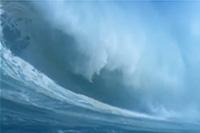
Tsunami warning systems
Marianne Menictas’ research project was to maximise the warning potential in the Mediterranean coastal regions.
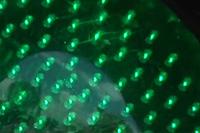
Green energy
Professor Matthew Phillip's research goes one step further, exploring the possibilities of zinc oxide, a material with better properties than its energy saving predecessor.
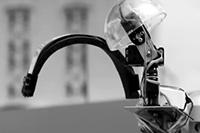
Cooling our environment
Professor Geoff Smith is studying thermal comfort in buildings with the aim to cool our environment naturally through energy redistribution.
